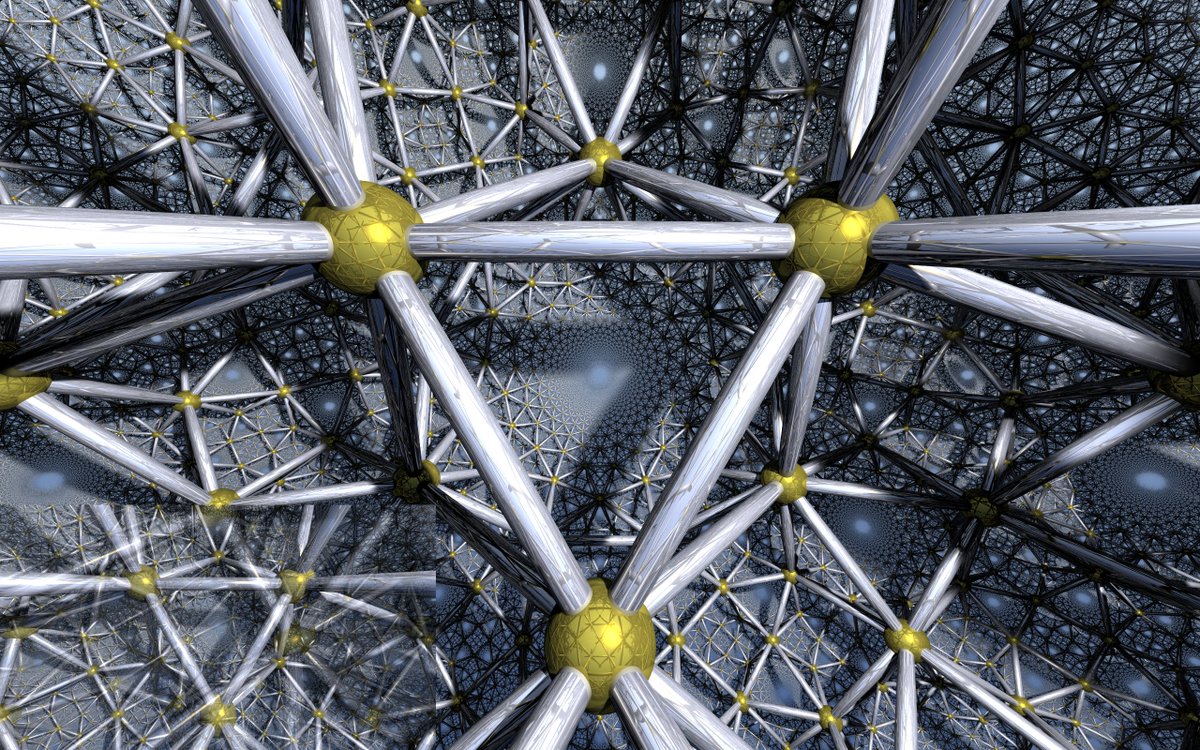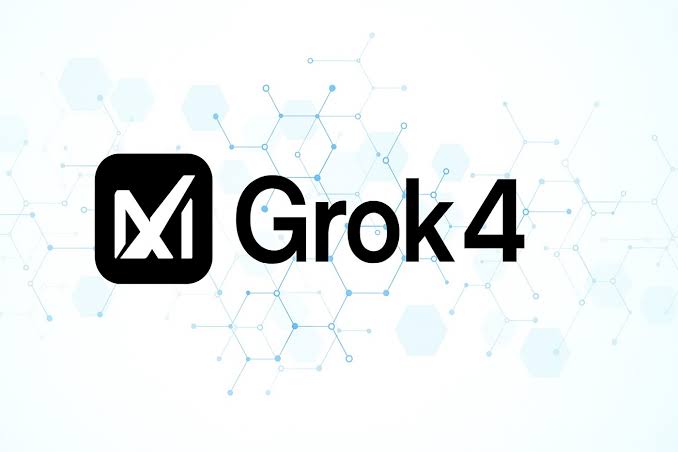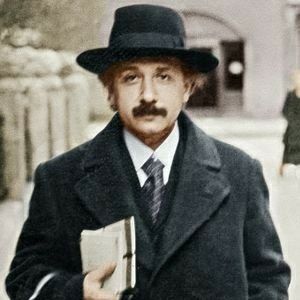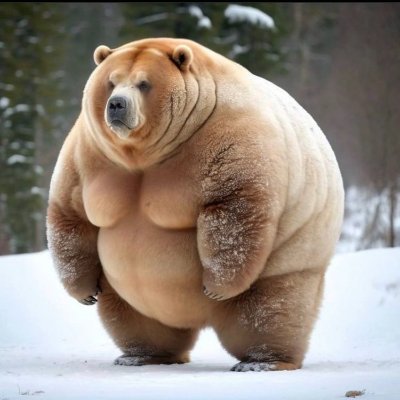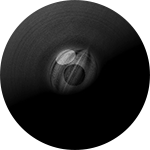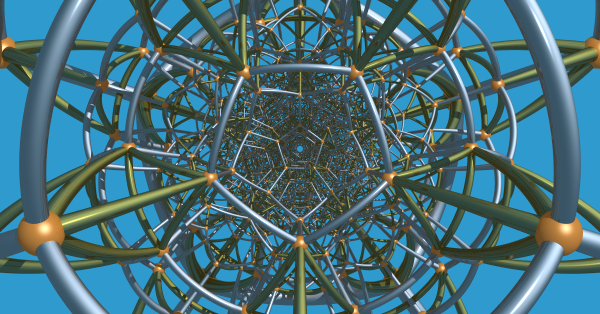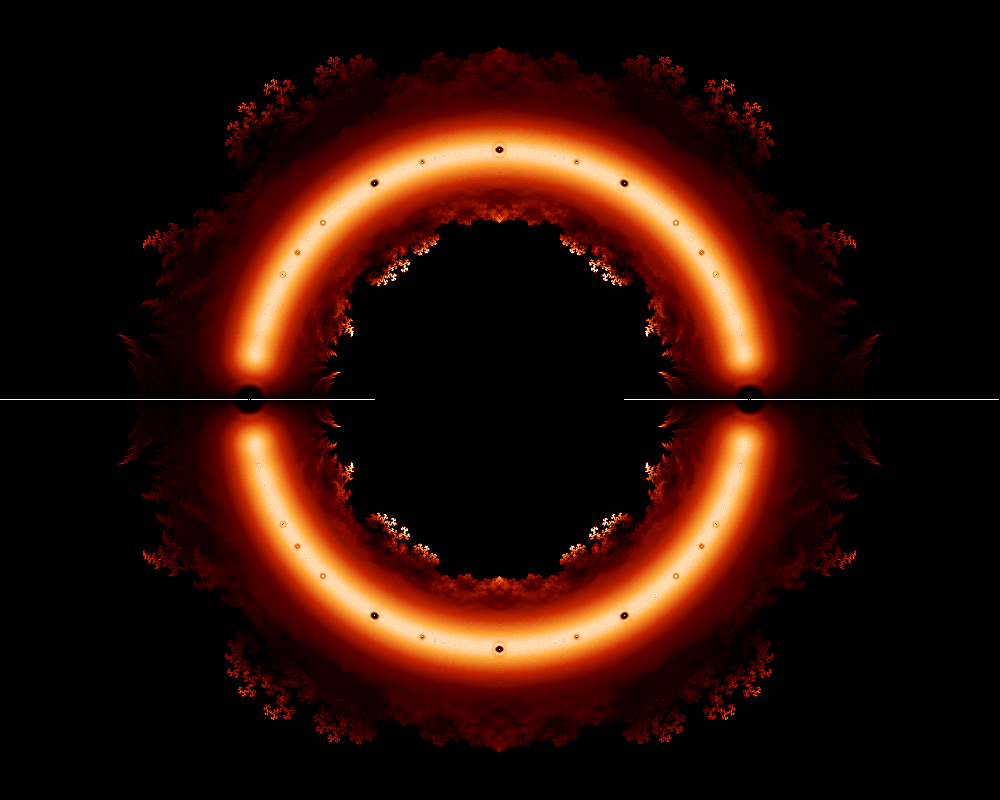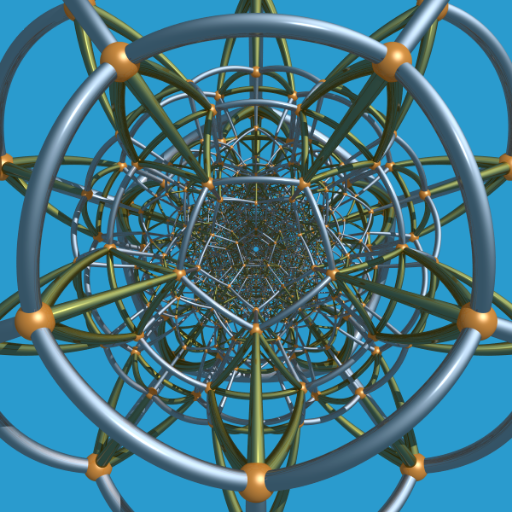
赵亮
@neozhaoliang
Followers
2K
Following
6K
Media
76
Statuses
402
For anyone who wonders how this obfuscated code can produce beautiful fractals, here is a detailed explanation (in Chinese): .
#つぶやきGLSL "castle2castle" for(float i,e,g;i++<1e2;){vec3 p=vec3((FC.xy-r*.5)/r.y*g,g-3.5);p.zy*=rotate2D(t);for(int j;j++<6;)p*=rotate3D(1.57,vec3(0,2.*smoothstep(-1.,1.,cos(t))-1.,1)),p=abs(p+p)-1.;g+=e=(length(p.yzx)*5.-6.)/9e2;o+=exp(-e*1e6)/7e1;}
0
4
11
RT @yuruyurau: a=(x,y,d=mag(k=(4+sin(y*2-t)*3)*cos(x/29),e=y/8-13))=>point((q=3*sin(k*2)+.3/k+sin(y/25)*k*(9+4*sin(e*9-d*3+t*2)))+30*cos(c=….
0
2K
0
Just cleaned up the code and created more animations. I have to say most periodic solutions are not visually appealing—they look like a tangled mess. Only a few solutions exhibit orbits with aesthetic beauty.
23
137
824
For those who are interested in how this animation is made, here is a Python + GLSL reproduce:.
The three-body problem is a classic and notoriously difficult question in physics and mathematics. It asks: How do three objects, such as stars, planets, or moons, move under the influence of each other’s gravity? Unlike the simpler two-body problem, which has precise and
2
6
60
RT @mhdksafa: This video needs to be the front page of every news station in the world. A Palestinian girl tries to escape the fire after….
0
20K
0


